A global reference for human genetic variation
- PMID: 26432245
- PMCID: PMC4750478
- DOI: 10.1038/nature15393
A global reference for human genetic variation
Abstract
The 1000 Genomes Project set out to provide a comprehensive description of common human genetic variation by applying whole-genome sequencing to a diverse set of individuals from multiple populations. Here we report completion of the project, having reconstructed the genomes of 2,504 individuals from 26 populations using a combination of low-coverage whole-genome sequencing, deep exome sequencing, and dense microarray genotyping. We characterized a broad spectrum of genetic variation, in total over 88 million variants (84.7 million single nucleotide polymorphisms (SNPs), 3.6 million short insertions/deletions (indels), and 60,000 structural variants), all phased onto high-quality haplotypes. This resource includes >99% of SNP variants with a frequency of >1% for a variety of ancestries. We describe the distribution of genetic variation across the global sample, and discuss the implications for common disease studies.
Conflict of interest statement
D.M.A. is affiliated with Vertex Pharmaceuticals, E.A. is on the speaker’s bureau for Illumina, P.A. is an advisor to Illumina and Ancestry.com, D.R.B., B.B., M.B., R.K.C., A.C., M.E., S.H., S.K., L.M., J.P. and R.S. are affiliated with Illumina, J.K.B. is affiliated with Ancestry.com, A.C. is on the Science Advisory Board of Biogen Idec. and the scientific advisory board of Affymetrix, A.W.C. is affiliated with DNAnexus, D.C. is affiliated with Personalis, C.J.D., J.G., J.P.S., T.W., B.W., and Y.Z. are affiliated with Affymetrix, E.T.D. is an advisor for DNAnexus, F.M.D.L.V. is employed by Real Time Genomics, M.A.D. is affiliated with SynapDx, P.D. is a co-founder and director of Genomics, and a partner in Peptide Groove, R.D. is a founder of Congenica and a consultant for Dovetail, E.E.E. is on the scientific advisory board of DNAnexus, and is a consultant for Kunming University of Science and Technology as part of the 1000 China Talent Program, P.F. is a member of the scientific advisory board of Omicia, M.G. is an advisor to Bina and DNAnexus, F.C.L.H. is affiliated with ThermoFisher Scientific, N.H. is affiliated with Life Technologies, C.L. is a scientific advisor for BioNano Genomics, H.Y.K.L. is affiliated with Bina Technologies which is part of Roche Sequencing, E.R.M. holds shares in Life Technologies, and G.M. is a co-founder of Genomics and a partner in Peptide Groove.
Figures

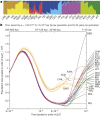



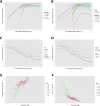


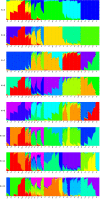
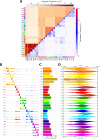
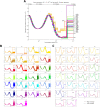
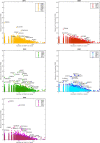
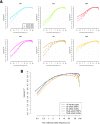

Comment in
-
Human genomics: The end of the start for population sequencing.Nature. 2015 Oct 1;526(7571):52-3. doi: 10.1038/526052a. Nature. 2015. PMID: 26432243 No abstract available.
Similar articles
-
An integrated map of structural variation in 2,504 human genomes.Nature. 2015 Oct 1;526(7571):75-81. doi: 10.1038/nature15394. Nature. 2015. PMID: 26432246 Free PMC article.
-
A map of human genome variation from population-scale sequencing.Nature. 2010 Oct 28;467(7319):1061-73. doi: 10.1038/nature09534. Nature. 2010. PMID: 20981092 Free PMC article.
-
An integrated map of genetic variation from 1,092 human genomes.Nature. 2012 Nov 1;491(7422):56-65. doi: 10.1038/nature11632. Nature. 2012. PMID: 23128226 Free PMC article.
-
Genomic Analysis in the Age of Human Genome Sequencing.Cell. 2019 Mar 21;177(1):70-84. doi: 10.1016/j.cell.2019.02.032. Cell. 2019. PMID: 30901550 Free PMC article. Review.
-
Molecular genetic studies of complex phenotypes.Transl Res. 2012 Feb;159(2):64-79. doi: 10.1016/j.trsl.2011.08.001. Epub 2011 Aug 31. Transl Res. 2012. PMID: 22243791 Free PMC article. Review.
Cited by
-
Hemochromatosis neural archetype reveals iron disruption in motor circuits.Sci Adv. 2024 Nov 22;10(47):eadp4431. doi: 10.1126/sciadv.adp4431. Epub 2024 Nov 22. Sci Adv. 2024. PMID: 39576859 Free PMC article.
-
Assessing the Causal Relationship Between Immune Cells and Temporomandibular Related Pain by Bi‑Directional Mendelian Randomization Analysis.J Pain Res. 2024 Nov 16;17:3791-3800. doi: 10.2147/JPR.S486817. eCollection 2024. J Pain Res. 2024. PMID: 39574830 Free PMC article.
-
The shared genetic architecture and evolution of human language and musical rhythm.Nat Hum Behav. 2024 Nov 21. doi: 10.1038/s41562-024-02051-y. Online ahead of print. Nat Hum Behav. 2024. PMID: 39572686
-
Metabolomic and genomic prediction of common diseases in 700,217 participants in three national biobanks.Nat Commun. 2024 Nov 21;15(1):10092. doi: 10.1038/s41467-024-54357-0. Nat Commun. 2024. PMID: 39572536 Free PMC article.
-
Human DNA from the oldest Eneolithic cemetery in Nalchik points the spread of farming from the Caucasus to the Eastern European steppes.iScience. 2024 Oct 16;27(11):110963. doi: 10.1016/j.isci.2024.110963. eCollection 2024 Nov 15. iScience. 2024. PMID: 39569382 Free PMC article.
References
Publication types
MeSH terms
Grants and funding
- R01HG7068/HG/NHGRI NIH HHS/United States
- R01HG6855/HG/NHGRI NIH HHS/United States
- R01 HL087699/HL/NHLBI NIH HHS/United States
- 090532/Z/09/Z/WT_/Wellcome Trust/United Kingdom
- R01HG4960/HG/NHGRI NIH HHS/United States
- R01 HG002898/HG/NHGRI NIH HHS/United States
- R01 GM108805/GM/NIGMS NIH HHS/United States
- U01HG5718/HG/NHGRI NIH HHS/United States
- 136855/CAPMC/ CIHR/Canada
- R01CA172652/CA/NCI NIH HHS/United States
- R01 HG004960/HG/NHGRI NIH HHS/United States
- 095552/Z/11/Z/WT_/Wellcome Trust/United Kingdom
- R01GM104390/GM/NIGMS NIH HHS/United States
- R01 HG007068/HG/NHGRI NIH HHS/United States
- U54 HG003067/HG/NHGRI NIH HHS/United States
- U01 HG005718/HG/NHGRI NIH HHS/United States
- R01 CA172652/CA/NCI NIH HHS/United States
- BB/I02593X/1/BB_/Biotechnology and Biological Sciences Research Council/United Kingdom
- WT097307/WT_/Wellcome Trust/United Kingdom
- U41 HG002371/HG/NHGRI NIH HHS/United States
- 102541/WT_/Wellcome Trust/United Kingdom
- U41 HG007635/HG/NHGRI NIH HHS/United States
- DP5OD9154/OD/NIH HHS/United States
- R01HG2898/HG/NHGRI NIH HHS/United States
- BHF_/British Heart Foundation/United Kingdom
- DP2OD6514/OD/NIH HHS/United States
- U41HG7497/HG/NHGRI NIH HHS/United States
- RC2 HG005552/HG/NHGRI NIH HHS/United States
- R01HG5214/HG/NHGRI NIH HHS/United States
- U01 HG006513/HG/NHGRI NIH HHS/United States
- U41 HG007497/HG/NHGRI NIH HHS/United States
- U01HG5715/HG/NHGRI NIH HHS/United States
- R01GM59290/GM/NIGMS NIH HHS/United States
- P01 GM099568/GM/NIGMS NIH HHS/United States
- U01 HG005211/HG/NHGRI NIH HHS/United States
- WT090770/Z/09/Z/WT_/Wellcome Trust/United Kingdom
- U01 HG005214/HG/NHGRI NIH HHS/United States
- HHMI/Howard Hughes Medical Institute/United States
- HHSN272201000025C/AI/NIAID NIH HHS/United States
- U41HG7635/HG/NHGRI NIH HHS/United States
- R01 DK075787/DK/NIDDK NIH HHS/United States
- P01GM99568/GM/NIGMS NIH HHS/United States
- U54 HG003273/HG/NHGRI NIH HHS/United States
- R01 HG007644/HG/NHGRI NIH HHS/United States
- U01 HG005728/HG/NHGRI NIH HHS/United States
- 617306/ERC_/European Research Council/International
- T32 HL094284/HL/NHLBI NIH HHS/United States
- T32GM7790/GM/NIGMS NIH HHS/United States
- 096599/WT_/Wellcome Trust/United Kingdom
- 100956/WT_/Wellcome Trust/United Kingdom
- U01 HG005715/HG/NHGRI NIH HHS/United States
- R01HL104608/HL/NHLBI NIH HHS/United States
- U01HG5211/HG/NHGRI NIH HHS/United States
- U01HG6513/HG/NHGRI NIH HHS/United States
- U54HG3079/HG/NHGRI NIH HHS/United States
- U01HG5214/HG/NHGRI NIH HHS/United States
- R01 GM104390/GM/NIGMS NIH HHS/United States
- WT100956/Z/13/Z/WT_/Wellcome Trust/United Kingdom
- R01 GM059290/GM/NIGMS NIH HHS/United States
- WT109497/WT_/Wellcome Trust/United Kingdom
- 095908/WT_/Wellcome Trust/United Kingdom
- R01 HL104608/HL/NHLBI NIH HHS/United States
- R01 HG006855/HG/NHGRI NIH HHS/United States
- R01 CA166661/CA/NCI NIH HHS/United States
- U54 HG003079/HG/NHGRI NIH HHS/United States
- R01 HG005701/HG/NHGRI NIH HHS/United States
- 090770/WT_/Wellcome Trust/United Kingdom
- U01HG5728/HG/NHGRI NIH HHS/United States
- HHSN268201100040C/HL/NHLBI NIH HHS/United States
- R01CA166661/CA/NCI NIH HHS/United States
- R01 GM113657/GM/NIGMS NIH HHS/United States
- RC2HG5552/HG/NHGRI NIH HHS/United States
- WT_/Wellcome Trust/United Kingdom
- T32 GM007790/GM/NIGMS NIH HHS/United States
- R01 HG007022/HG/NHGRI NIH HHS/United States
- U54HG3067/HG/NHGRI NIH HHS/United States
- WT0855322/Z/08/Z/WT_/Wellcome Trust/United Kingdom
- DP5 OD009154/OD/NIH HHS/United States
- R01 HG002385/HG/NHGRI NIH HHS/United States
- DP2 OD006514/OD/NIH HHS/United States
- R01HL87699/HL/NHLBI NIH HHS/United States
- R01HG5701/HG/NHGRI NIH HHS/United States
- T32HL94284/HL/NHLBI NIH HHS/United States
- 089276/Z.09/Z/WT_/Wellcome Trust/United Kingdom
- R01HG2385/HG/NHGRI NIH HHS/United States
- U54HG3273/HG/NHGRI NIH HHS/United States
- WT098051/WT_/Wellcome Trust/United Kingdom
- G0801823/MRC_/Medical Research Council/United Kingdom
- R01HG7644/HG/NHGRI NIH HHS/United States
- WT086084/Z/08/Z/WT_/Wellcome Trust/United Kingdom
- BB/I021213/1/BB_/Biotechnology and Biological Sciences Research Council/United Kingdom
LinkOut - more resources
Full Text Sources
Other Literature Sources


